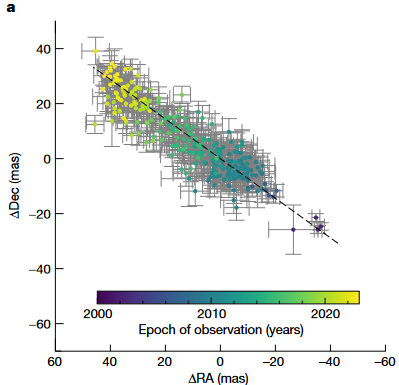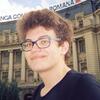Intermediate Mass Black Hole Identified in Omega Centauri

Observations of black holes in the universe reveal that they exhibit a wide range of masses. However, there is a significant gap in our understanding between the lightest and heaviest black holes. At the low end of the spectrum are stellar-mass black holes, ranging from approximately 3 M☉ to 150 M☉. At the other extreme are supermassive black holes, typically found at the centres of galaxies, with lower-end masses of around 105 M☉. Notably, between these extremes lies a category known as intermediate-mass black holes (IMBH), which are conspicuously elusive.
Omega Centauri, the largest of the globular clusters orbiting the Milky Way, has long been suspected to harbour an intermediate-mass black hole (IMBH). This could be a crucial discovery, acting as the largest black hole present within the vicinity of the Milky Way. Despite this, the idea has faced scrutiny and lacked any meaningful consensus. One big issue is the lack of any meaningful X-ray emissions from an accretion disk; 12 orders of magnitude below the Eddington limit.
Now, a study led by researchers at the Max Planck Institute for Astronomy, Maximilian Häberle and Nadine Neumayer, has identified a lower mass limit for this black hole, placing it at least 8,200 M☉, well above the necessary threshold. Their study leverages archival data from the Hubble Space Telescope, comprising over 500 images taken over the last 20 years. Within these images, the team identified a set of seven stars near the centre of Omega Centauri. Their measurements showed that the velocities of these stars were significantly greater than the cluster's proposed escape velocity, suggesting these are intensely gravitationally bound to the system.

These results are part of the oMEGACat II project, a comprehensive catalogue detailing the proper motions of 1.4 million stars in Omega Centauri. These are the motions of stars tracked across the celestial sphere. The team leveraged the KS2 software for source detection, tracking, and for photometric measurements. Furthermore, stars of great interest were investigated to obtain a line-of-sight (LOS) velocity. Together, the 3d dynamical evolution of these stars could be tracked. LOS velocities were measured using the VLT MUSE spectrograph, to identify the wavelength shifts within spectra with time. However, limitations in the signal-to-noise ratio within the data prevented the team from performing a wider range survey.

Building on previous studies of Omega Centauri, which have established upper mass limits of around 12,000 M☉ for a potential intermediate-mass black hole (IMBH), the prospects for detecting such an object are now more promising. To advance our understanding, more detailed spectroscopic analysis of additional stars within the cluster is needed to uncover further evidence of stars moving at escape speeds. Additionally, the authors emphasise the importance of conducting further observational studies to refine the black hole's mass estimate. Beyond this, Omega Centauri offers a valuable opportunity to explore the mechanisms of IMBH formation, providing a unique case study for developing and testing theories about how black holes of this intermediate mass range might form and evolve.
--
Journal Source: M. Häberle et al, Fast-moving stars around an intermediate-mass black hole in ω Centauri, Nature, Vol 631, (2024), DOI: https://doi.org/10.1038/s41586-024-07511-z
Cover Image Credit: NASA Science
